Is your check engine light on, and are you wondering how to reset it using an OBD2 scanner? With the right OBD2 scan tool and a systematic approach, resetting your check engine light is possible, potentially saving you time and money. MERCEDES-DIAGNOSTIC-TOOL.EDU.VN provides expert guidance to help you confidently diagnose and address car issues. Learn about diagnostic tools, unlock hidden features, and troubleshoot with confidence.
Contents
- 1. Understanding the Check Engine Light and OBD2 Scanners
- 2. Step-by-Step Guide: Resetting the Check Engine Light
- 3. Common Reasons for Check Engine Light Activation
- 4. The Importance of Diagnosing the Underlying Issue
- 5. Choosing the Right OBD2 Scanner for Your Mercedes-Benz
- 6. When to Seek Professional Help
- 7. Maintaining Your Mercedes-Benz to Prevent Check Engine Light Issues
- 8. Advanced Diagnostic Procedures for Mercedes-Benz Vehicles
- 9. Common Diagnostic Trouble Codes (DTCs) in Mercedes-Benz Vehicles
- 10. Resetting the Check Engine Light in Hybrid and Electric Mercedes-Benz Vehicles
- Conclusion
- FAQ: Resetting Check Engine Light Using OBD2
1. Understanding the Check Engine Light and OBD2 Scanners
What does the check engine light indicate, and what role does an OBD2 scanner play in resolving it? The check engine light serves as an alert from your car’s onboard diagnostic system, signaling a potential issue that needs attention. According to the Environmental Protection Agency (EPA), all cars sold in the US since 1996 are required to have an OBD2 system. This system monitors various sensors and systems in your vehicle, and when it detects a problem, it illuminates the check engine light. An OBD2 scanner is a tool that allows you to communicate with your car’s computer, retrieve diagnostic trouble codes (DTCs), and, in many cases, reset the check engine light.
-
Purpose of the Check Engine Light: The primary function is to alert the driver to potential malfunctions affecting vehicle emissions, performance, or safety. Ignoring this warning can lead to more severe damage and costly repairs.
-
What is an OBD2 Scanner? An OBD2 scanner is an electronic device that connects to your car’s OBD2 port (usually located under the dashboard) to read diagnostic information. It translates the complex data from your car’s computer into understandable codes and descriptions.
-
Types of OBD2 Scanners: There are basic code readers that only display DTCs and more advanced scanners that offer features like live data streaming, freeze frame data, and bidirectional control. Some scanners also have built-in repair databases and access to online resources.
Type of Scanner Features Benefits Basic Code Reader Reads and displays DTCs Affordable and easy to use for basic diagnostics Advanced Scanner Live data, freeze frame, bidirectional control Provides comprehensive diagnostic information, allowing for in-depth analysis and troubleshooting Wireless/Bluetooth Connects to smartphones or tablets via Bluetooth or Wi-Fi Convenient and portable, often paired with user-friendly apps Professional-Grade Advanced features, extensive vehicle coverage, software updates Designed for professional mechanics, offering the most comprehensive diagnostic capabilities
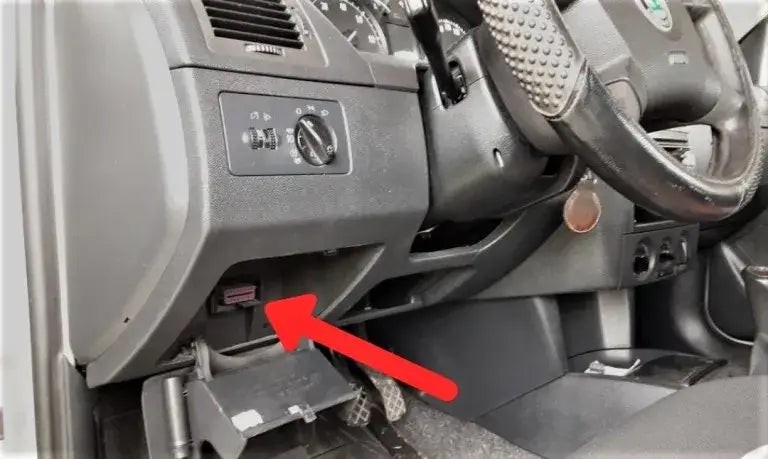 OBD2 Port Location
OBD2 Port Location
2. Step-by-Step Guide: Resetting the Check Engine Light
How do you use an OBD2 scanner to reset the check engine light in your Mercedes-Benz? Follow these detailed steps to effectively diagnose the issue and clear the code.
Step 1: Locate the OBD2 Port
The OBD2 port is typically located under the dashboard on the driver’s side. It’s a 16-pin connector, and its location is standardized across all vehicles sold in the US since 1996. Refer to your vehicle’s owner’s manual if you have trouble locating it.
Step 2: Connect the OBD2 Scanner
Plug the OBD2 scanner into the port. Ensure it’s securely connected. Some scanners may require you to turn the ignition to the “on” position (without starting the engine) to power up.
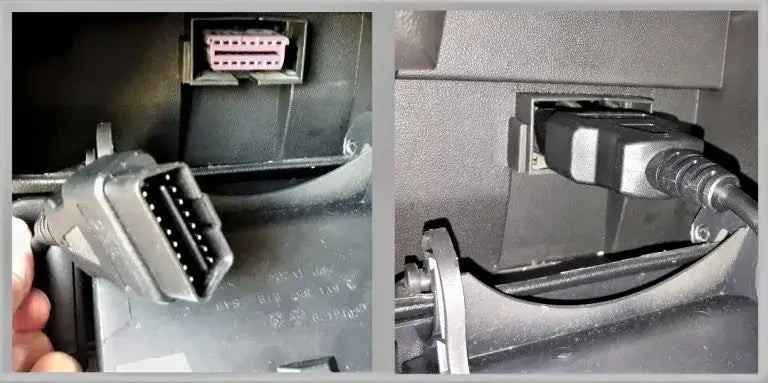 Connecting OBD2 Scanner
Connecting OBD2 Scanner
Step 3: Turn On the Ignition
Turn the ignition to the “on” position, but do not start the engine. This allows the scanner to communicate with your car’s computer.
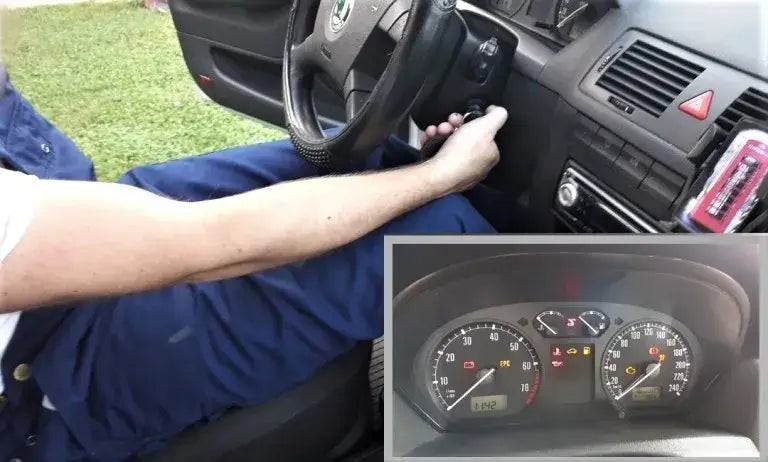 Turn On the Ignition
Turn On the Ignition
Step 4: Scan for Diagnostic Trouble Codes (DTCs)
Use the scanner’s menu to initiate a scan. The scanner will read any stored DTCs in your car’s computer. This process may take a few minutes.
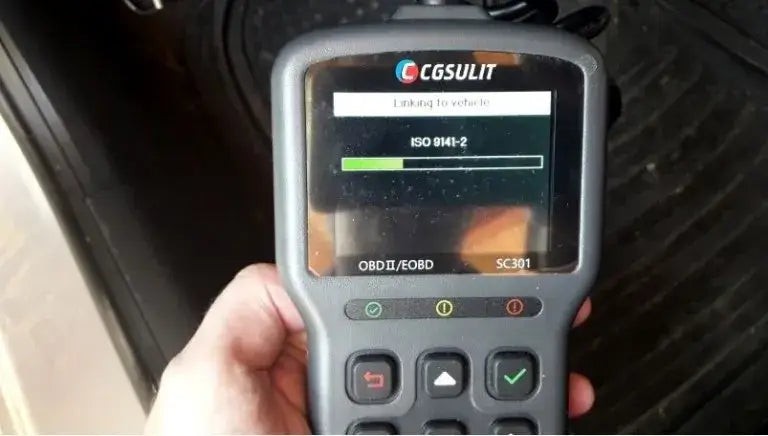 Scanning Error Codes
Scanning Error Codes
Step 5: Record and Interpret the Codes
Write down any DTCs that appear. Refer to your scanner’s manual or online resources to understand what each code means. Websites like OBD-Codes.com and the National Institute for Automotive Service Excellence (ASE) provide extensive databases of DTC definitions.
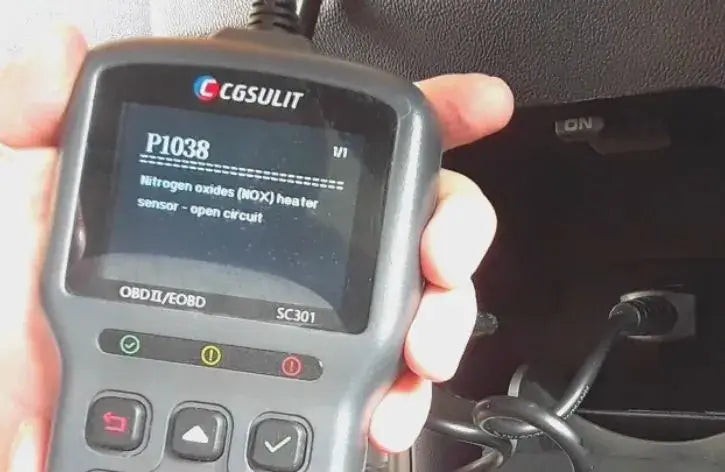 Reading Error Codes
Reading Error Codes
Step 6: Clear the Codes
Once you’ve understood the codes and addressed the underlying issue (or determined it’s a minor, non-recurring problem), use the scanner’s menu to clear the codes. This will reset the check engine light.
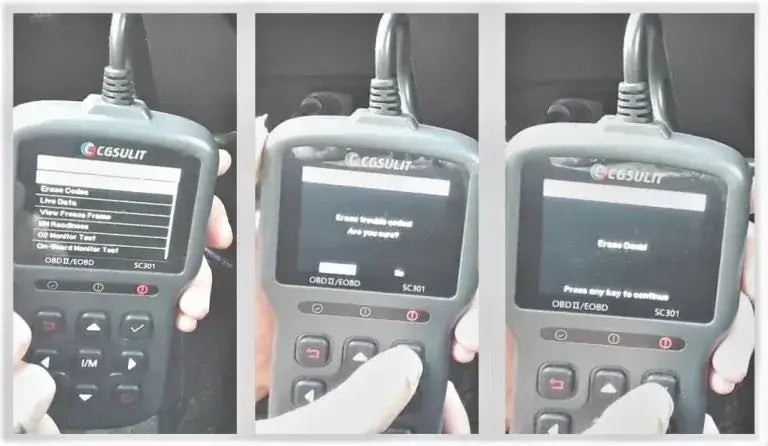 Clearing Error Codes
Clearing Error Codes
Step 7: Verify the Reset
Turn off the ignition, remove the scanner, and then start the engine. Check if the check engine light remains off. If it comes back on, it indicates that the underlying issue persists and needs further attention.
 Return to Homepage
Return to Homepage
Step 8: Disconnect the OBD2 Scanner
Once the check engine light is off or you have identified the need for further repairs, disconnect the OBD2 scanner from the port.
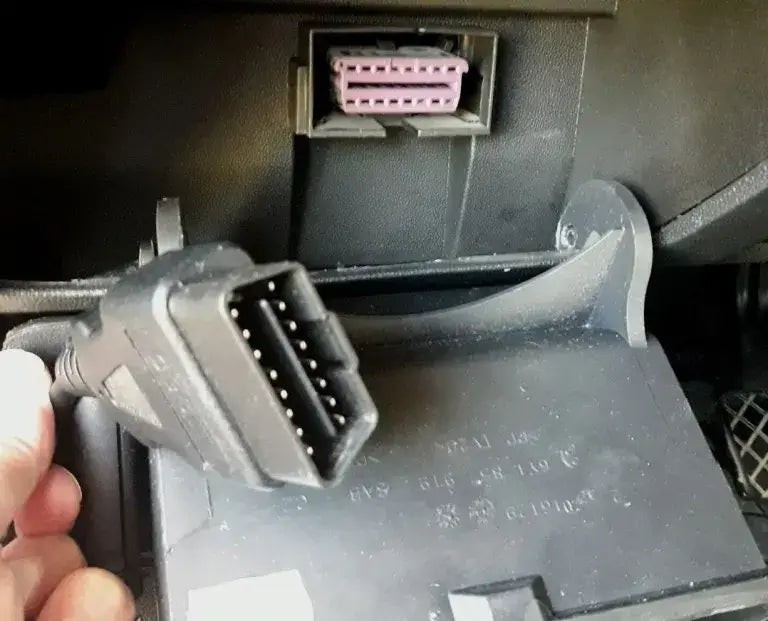 Disconnecting OBD2 Scanner
Disconnecting OBD2 Scanner
Step 9: Turn Off the Ignition
Turn the ignition key back into the first position or as backward as it goes.
 Turn Off the Ignition
Turn Off the Ignition
Step 10: Start the Engine and Check If the Light is Gone
If everything is OK, the check engine light should go off immediately after starting the engine.
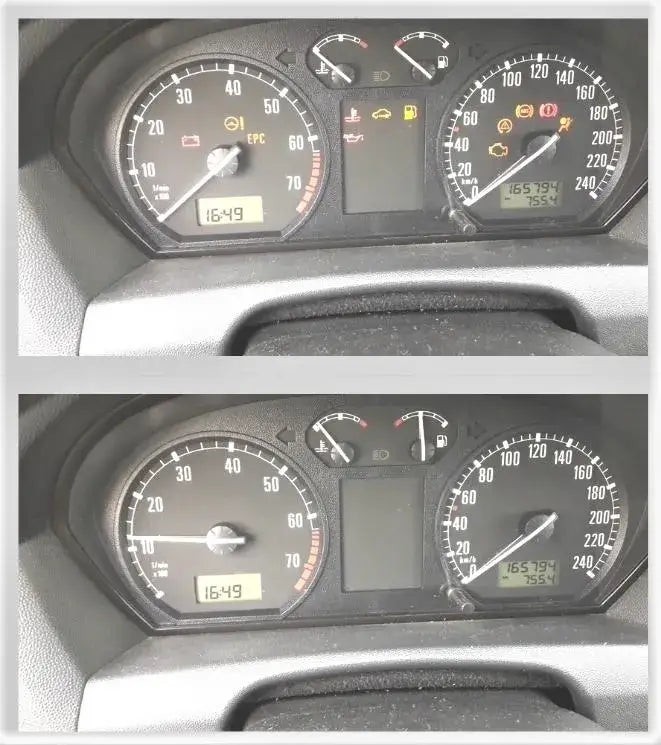 Start the Engine and Check If the Light is Gone
Start the Engine and Check If the Light is Gone
3. Common Reasons for Check Engine Light Activation
What are the most frequent causes of a check engine light coming on in a Mercedes-Benz? Being aware of these common issues can help you quickly diagnose and address problems.
- Loose or Damaged Gas Cap: This is one of the most common reasons. A loose gas cap can cause fuel vapors to leak, triggering the check engine light. Ensure the gas cap is properly tightened.
- Faulty Oxygen Sensor: Oxygen sensors monitor the amount of oxygen in the exhaust stream. A failing sensor can affect fuel efficiency and emissions.
- Catalytic Converter Issues: The catalytic converter reduces harmful emissions. If it fails, it can cause the check engine light to illuminate.
- Mass Airflow (MAF) Sensor Problems: The MAF sensor measures the amount of air entering the engine. A malfunctioning sensor can cause poor engine performance and trigger the check engine light.
- Spark Plug or Ignition Coil Failure: Worn or faulty spark plugs or ignition coils can cause misfires, leading to the check engine light.
- Vacuum Leaks: Leaks in the vacuum system can disrupt the air-fuel mixture, causing the check engine light to come on.
- EGR Valve Issues: The Exhaust Gas Recirculation (EGR) valve helps reduce emissions. A malfunctioning EGR valve can trigger the check engine light.
According to a study by CarMD, the most common repair associated with a check engine light is replacing the oxygen sensor. They found that faulty oxygen sensors account for approximately 7% of all check engine light-related repairs.
4. The Importance of Diagnosing the Underlying Issue
Why is it crucial to diagnose and fix the root cause of a check engine light before resetting it? Simply resetting the light without addressing the problem is only a temporary solution and can lead to more severe issues down the road.
- Masking Serious Problems: Resetting the light hides the underlying problem, preventing you from addressing it promptly. This can lead to further damage and more expensive repairs.
- Potential for Increased Damage: Ignoring the check engine light can result in damage to other components in your car. For example, a misfiring engine can damage the catalytic converter.
- Impact on Vehicle Performance: Many issues that trigger the check engine light can affect your car’s performance, fuel efficiency, and emissions.
- Environmental Concerns: Some problems, such as catalytic converter failure, can increase harmful emissions.
- Safety Risks: Certain issues that trigger the check engine light can pose safety risks. For instance, a problem with the anti-lock braking system (ABS) can compromise braking performance.
5. Choosing the Right OBD2 Scanner for Your Mercedes-Benz
How do you select the best OBD2 scanner for your Mercedes-Benz, and what features should you look for? Choosing the right scanner depends on your needs, budget, and technical expertise.
-
Compatibility: Ensure the scanner is compatible with your Mercedes-Benz model and year. Some scanners are specifically designed for European vehicles.
-
Features: Consider features like live data streaming, freeze frame data, bidirectional control, and built-in repair databases.
-
Ease of Use: Look for a scanner with a user-friendly interface and clear instructions.
-
Update Capability: Choose a scanner that can be updated with the latest software and vehicle coverage.
-
Brand Reputation: Opt for a reputable brand known for quality and reliability.
Feature Description Benefit Live Data Displays real-time data from various sensors and systems Allows you to monitor engine performance and identify anomalies Freeze Frame Captures data at the moment a DTC is triggered Provides a snapshot of conditions when the problem occurred, aiding in diagnosis Bidirectional Control Allows you to send commands to the car’s computer to test components Enables you to activate or deactivate components for testing purposes Repair Database Built-in database of DTC definitions, repair procedures, and troubleshooting tips Provides quick access to information needed for diagnosis and repair Update Capability Ability to update the scanner with the latest software and vehicle coverage Ensures the scanner remains compatible with newer vehicles and has access to the latest diagnostic information
6. When to Seek Professional Help
When should you consult a professional mechanic instead of trying to reset the check engine light yourself? In certain situations, it’s best to seek expert assistance to avoid potential damage and ensure proper repairs.
- Complex Diagnostic Codes: If the OBD2 scanner reveals complex or unfamiliar codes, it’s best to consult a professional mechanic.
- Recurring Check Engine Light: If the check engine light comes back on shortly after being reset, it indicates a persistent issue that requires expert attention.
- Unusual Symptoms: If your car exhibits unusual symptoms, such as rough idling, stalling, or a significant drop in fuel efficiency, seek professional help.
- Safety Concerns: If the check engine light is accompanied by safety concerns, such as brake problems or steering issues, consult a mechanic immediately.
- Lack of Experience: If you’re not comfortable working on your car or lack the necessary tools and knowledge, it’s best to leave the repairs to a professional.
7. Maintaining Your Mercedes-Benz to Prevent Check Engine Light Issues
What steps can you take to maintain your Mercedes-Benz and minimize the chances of the check engine light coming on? Regular maintenance is key to preventing many of the issues that trigger the check engine light.
- Regular Oil Changes: Follow the manufacturer’s recommended oil change schedule. Old or contaminated oil can cause engine problems and trigger the check engine light.
- Check and Replace Filters: Regularly inspect and replace air filters, fuel filters, and cabin air filters.
- Inspect and Replace Spark Plugs: Follow the recommended spark plug replacement schedule. Worn spark plugs can cause misfires and trigger the check engine light.
- Maintain Proper Tire Pressure: Check and maintain proper tire pressure to ensure optimal fuel efficiency and handling.
- Inspect and Maintain Hoses and Belts: Regularly inspect hoses and belts for cracks, leaks, or wear.
- Check and Top Off Fluids: Regularly check and top off coolant, brake fluid, power steering fluid, and windshield washer fluid.
- Address Issues Promptly: If you notice any unusual symptoms or performance issues, address them promptly to prevent them from escalating.
According to the National Highway Traffic Safety Administration (NHTSA), regular vehicle maintenance can significantly reduce the risk of breakdowns and accidents.
8. Advanced Diagnostic Procedures for Mercedes-Benz Vehicles
What advanced diagnostic procedures can be used for Mercedes-Benz vehicles to identify and address complex issues? Mercedes-Benz vehicles often require specialized diagnostic tools and procedures due to their advanced technology and complex systems.
- Mercedes-Benz Diagnostic Software: Mercedes-Benz offers its own diagnostic software, such as XENTRY and DAS (Diagnostic Assistance System), which provide comprehensive diagnostic capabilities.
- Specialized OBD2 Scanners: Some OBD2 scanners are specifically designed for European vehicles, including Mercedes-Benz. These scanners often have enhanced diagnostic features and vehicle coverage.
- Live Data Analysis: Analyzing live data from various sensors and systems can help identify anomalies and pinpoint the root cause of complex issues.
- Component Testing: Using bidirectional control features, you can test individual components to determine if they are functioning properly.
- Wiring Diagram Analysis: Analyzing wiring diagrams can help identify electrical issues, such as shorts, opens, or faulty connections.
9. Common Diagnostic Trouble Codes (DTCs) in Mercedes-Benz Vehicles
What are some common DTCs that may appear when scanning a Mercedes-Benz vehicle, and what do they indicate? Being familiar with these codes can help you quickly diagnose and address common issues.
- P0171 and P0174 (System Too Lean): These codes indicate that the engine is running lean, meaning there is too much air and not enough fuel in the air-fuel mixture. This can be caused by vacuum leaks, faulty oxygen sensors, or fuel system problems.
- P0300 (Random Misfire Detected): This code indicates that the engine is experiencing random misfires. This can be caused by worn spark plugs, faulty ignition coils, or fuel system problems.
- P0420 (Catalyst System Efficiency Below Threshold): This code indicates that the catalytic converter is not functioning efficiently. This can be caused by a failing catalytic converter, exhaust leaks, or engine problems.
- P0442 (Evaporative Emission Control System Leak Detected): This code indicates that there is a leak in the evaporative emission control system. This can be caused by a loose gas cap, faulty purge valve, or damaged hoses.
- P0455 (Evaporative Emission Control System Leak Detected – Gross Leak): This code indicates a large leak in the evaporative emission control system. This can be caused by a missing or damaged gas cap, faulty vent valve, or damaged fuel tank.
| DTC | Description | Common Causes |
|---|---|---|
| P0171 | System Too Lean (Bank 1) | Vacuum leaks, faulty O2 sensors, fuel system problems |
| P0174 | System Too Lean (Bank 2) | Vacuum leaks, faulty O2 sensors, fuel system problems |
| P0300 | Random Misfire Detected | Worn spark plugs, faulty ignition coils, fuel system problems |
| P0420 | Catalyst System Efficiency Below Threshold (Bank 1) | Failing catalytic converter, exhaust leaks, engine problems |
| P0442 | Evaporative Emission Control System Leak Detected | Loose gas cap, faulty purge valve, damaged hoses |
| P0455 | Evaporative Emission Control System Leak Detected – Gross Leak | Missing/damaged gas cap, faulty vent valve, damaged fuel tank |
10. Resetting the Check Engine Light in Hybrid and Electric Mercedes-Benz Vehicles
Are there any differences in resetting the check engine light in hybrid and electric Mercedes-Benz vehicles compared to traditional gasoline-powered cars? Hybrid and electric vehicles have unique systems and components that can affect the diagnostic and reset procedures.
- High-Voltage Systems: Hybrid and electric vehicles have high-voltage systems that require special safety precautions. Never attempt to diagnose or repair these systems without proper training and equipment.
- Battery Management System (BMS): The BMS monitors and controls the battery pack. Issues with the BMS can trigger the check engine light.
- Regenerative Braking System: The regenerative braking system captures energy during braking and stores it in the battery. Problems with this system can trigger the check engine light.
- Electric Motor and Inverter: The electric motor and inverter are responsible for converting electrical energy into mechanical energy. Issues with these components can trigger the check engine light.
- Specialized Diagnostic Tools: Some OBD2 scanners are specifically designed for hybrid and electric vehicles. These scanners often have enhanced diagnostic features and vehicle coverage for these vehicles.
According to a report by the Electric Power Research Institute (EPRI), the maintenance requirements for electric vehicles are generally lower than those for gasoline-powered cars, but specialized diagnostic and repair procedures are often required.
Conclusion
Effectively resetting the check engine light using an OBD2 scanner involves understanding the underlying issue and addressing it promptly. While this guide provides a comprehensive overview, remember that some situations require professional expertise. For personalized guidance and assistance with your Mercedes-Benz diagnostic needs, contact MERCEDES-DIAGNOSTIC-TOOL.EDU.VN. Our experts can help you select the right diagnostic tools, unlock hidden features, and provide step-by-step repair instructions.
Don’t let a check engine light keep you guessing. Contact MERCEDES-DIAGNOSTIC-TOOL.EDU.VN today for expert assistance with diagnostic tools, unlocking hidden features, and step-by-step repair guidance. Call us at +1 (641) 206-8880 or visit our website at MERCEDES-DIAGNOSTIC-TOOL.EDU.VN. Our address is 789 Oak Avenue, Miami, FL 33101, United States.
FAQ: Resetting Check Engine Light Using OBD2
- What is an OBD2 scanner?
An OBD2 scanner is a tool that connects to your car’s onboard diagnostic system, allowing you to read diagnostic trouble codes (DTCs) and reset the check engine light. It translates the complex data from your car’s computer into understandable codes and descriptions. - How do I locate the OBD2 port in my Mercedes-Benz?
The OBD2 port is typically located under the dashboard on the driver’s side. It’s a 16-pin connector, and its location is standardized across all vehicles sold in the US since 1996. Refer to your vehicle’s owner’s manual if you have trouble locating it. - Can I reset the check engine light without fixing the underlying issue?
While you can reset the check engine light, it’s crucial to diagnose and fix the root cause of the problem. Simply resetting the light without addressing the issue is only a temporary solution and can lead to more severe problems down the road. - What are some common reasons for the check engine light to come on?
Common causes include a loose or damaged gas cap, faulty oxygen sensor, catalytic converter issues, mass airflow (MAF) sensor problems, spark plug or ignition coil failure, vacuum leaks, and EGR valve issues. - When should I seek professional help instead of trying to reset the check engine light myself?
Consult a professional mechanic if you encounter complex diagnostic codes, a recurring check engine light, unusual symptoms, safety concerns, or if you lack the necessary experience to work on your car. - How do I choose the right OBD2 scanner for my Mercedes-Benz?
Consider compatibility, features like live data streaming and bidirectional control, ease of use, update capability, and brand reputation when selecting an OBD2 scanner for your Mercedes-Benz. - What are some common DTCs in Mercedes-Benz vehicles?
Common DTCs include P0171 and P0174 (System Too Lean), P0300 (Random Misfire Detected), P0420 (Catalyst System Efficiency Below Threshold), P0442 (Evaporative Emission Control System Leak Detected), and P0455 (Evaporative Emission Control System Leak Detected – Gross Leak). - Are there any differences in resetting the check engine light in hybrid and electric Mercedes-Benz vehicles?
Hybrid and electric vehicles have high-voltage systems and unique components that require specialized diagnostic tools and procedures. Always follow proper safety precautions when working on these vehicles. - What maintenance steps can I take to prevent check engine light issues?
Regular maintenance steps include regular oil changes, checking and replacing filters, inspecting and replacing spark plugs, maintaining proper tire pressure, inspecting and maintaining hoses and belts, and checking and topping off fluids. - Where can I find expert assistance with my Mercedes-Benz diagnostic needs?
Contact MERCEDES-DIAGNOSTIC-TOOL.EDU.VN for expert assistance with diagnostic tools, unlocking hidden features, and step-by-step repair guidance. Call us at +1 (641) 206-8880 or visit our website at MERCEDES-DIAGNOSTIC-TOOL.EDU.VN. Our address is 789 Oak Avenue, Miami, FL 33101, United States.
